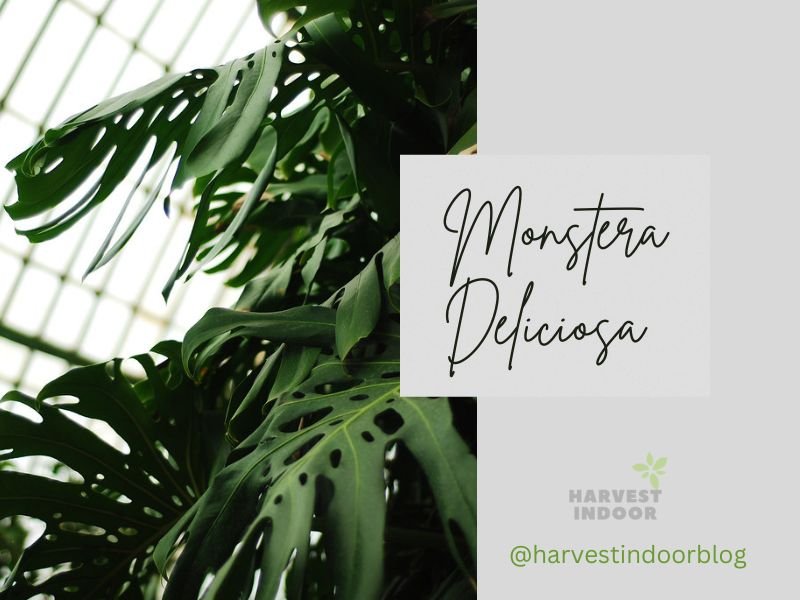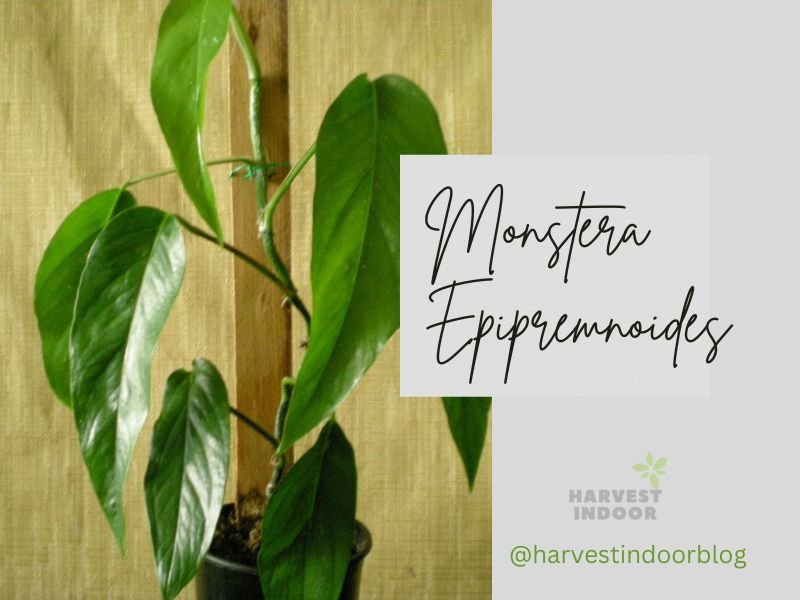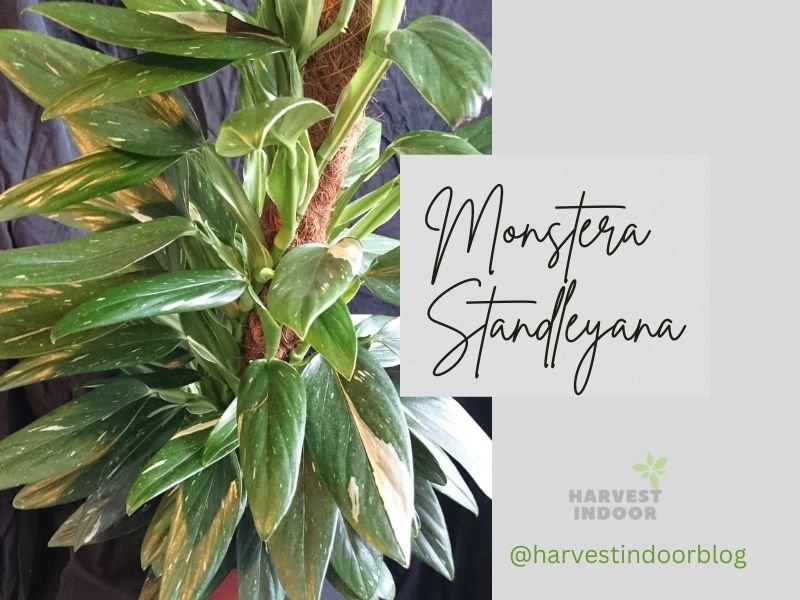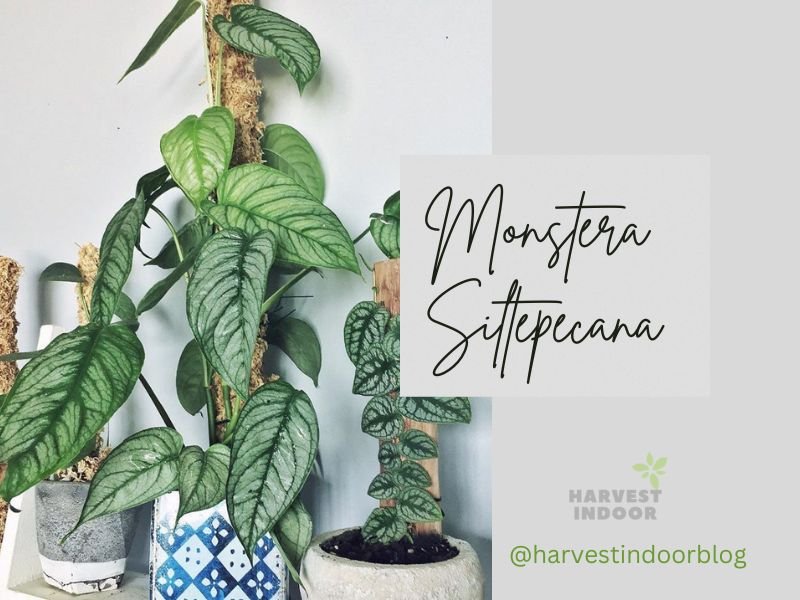In recent years, tall monstera varieties have gained popularity due to their striking appearance and ability to add stunning vocal points to any vertical space. If you’re not sure which tall monstera varieties to thrive, here are our best picks that are perfect to grow indoors or outdoors.
Table of Contents
Types of Tall Monstera Varieties
Monstera Adansonii

Plant Size: Approximately 6 to 8 feet (1.8 to 2.4 meters) tall indoors, 10 feet (3 meters) or more outdoors
Zones: 9 to 10
Growing Habit(s): Climbing, vining
Also known as the Swiss cheese vine, monstera adansonii is among the most popular tall monstera plants among plant enthusiasts. Noted for its large, oblong-shaped foliage with holes that start developing when the plant matures, monstera adansonii shares similar features with its cousin, monstera obliqua.
One of the easiest ways to differentiate these two gorgeous plants is by observing their foliage size and texture. In general, monstera adansonii produce thicker, larger foliage than monstera obliqua, which is smaller and more ‘papery’-like.
Monstera Deliciosa

Plant Size: Approximately 9 to 15 feet (2.7 to 4.5 meters) tall indoors, 18 feet (5.4 meters) or more outdoors
Zones: 10 to 12
Growing Habit(s): Vining, climbing
The most distinctive feature of this tall monstera plant is its massive, glossy, arrowhead-shaped foliage that is perforated with splits. Along with shades of dark to bright green, the variegated monstera deliciosa also produces impressive foliage with lime green to milky white color.
Monstera Borsigiana

Plant Size: Approximately 6 to 10 feet (1.8 to 3 meters) indoors, 15 feet (4.5 meters) or more outdoors
Zones: 9 to 11
Growing Habit(s): Vining
Although marketed as different plants, monstera borsigiana is a cultivar of monstera deliciosa, and these two share a striking resemblance that most of the time, it’s not easy to tell which one is who. To tell them apart, look at their leaves’ size and growth habits. Monstera borsigiana are smaller than monstera deliciosa and can be grown in pots or hanging baskets as a hanging plant.
Monstera Dubia

Plant Size: Approximately 3 to 12 feet (0.9 to 3.6 meters) indoors, more than 15 feet (4.5 meters) outdoors
Zones: 9 to 11
Growing Habit(s): Climbing
This tall monstera plant is native to Central and Southern America, and unlike its counterparts, monstera dubia produces compact dark green leaves with silvery-white veins and has no holes or splits. Monstera dubia needs moss poles or stalks to support their growth and can be grown as an epiphyte–which means they rely on another plant to grow without being parasitic nor absorbing the host plant’s nutrients.
Monstera Epipremnoides

Plant Size: Approximately 6 to 10 feet (1.8 to 3 meters) indoors, more than 20 feet (6 meters) outdoors
Zones: 11 to 12
Growing Habit(s): Climbing, vining
These native to Central and South American rainforests belong to the same genus as monstera deliciosa. However, monstera epipremnoides produce more elongated foliage with larger holes, which can take more than 60% part of the tall monstera plant. Often mistaken with monstera obliqua, monstera epipremnoides foliage is more elongated, giving them a longer appearance.
Monstera Standleyana

Plant Size: Approximately 5 to 10 feet (1.5 to 3 meters) indoors, more than 15 feet (4.5 meters) outdoors
Zones: 10 to 12
Growing Habit(s): Climbing, vining
This tall monstera variety offers thick, glossy elongated-shape foliage with an eye-catching combination of dark green and lime-green or milky white color. In contrast to any other monstera varieties, monstera standleyana tend to grow more slowly and are prone to pests and diseases when they thrive in a stressful, improper environment.
Monstera Siltepecana

Plant Size: Approximately 8 to 12 feet (2.4 to 3.6 meters) tall indoors, more than 15 feet (4.5 meters) tall outdoors
Zones: 10 to 12
Growing Habit(s): Vining, climbing
Also known as the silver monstera, monstera siltepecana is similar to monstera dubia in terms of looks. This tall monstera variety produces oblong-shaped foliage with pointy tips and attractive dark green color with silvery veins. The key difference between monstera siltepecana and monstera dubia is in their foliage shape. In general, monstera siltepecana has more elongated foliage while monstera dubia produces roundish, kind of heart-shaped leaves.
Monstera Karstenianum

Plant Size: Approximately 8 to 10 feet (2.4 to 3 meters) tall indoors, 15 feet (4.5 meters) or more outdoors
Zones: 10 to 12
Growing Habit(s): Climbing
Monstera karstenianum or ‘Monstera Peru’ has distinctive features that make this tall monstera plant stand out among the other varieties. This plant has no holes or splits, but glossy, green foliage with darker green veins. If you like to incorporate more color into your nursery, the variegated type of monstera karstenianum offers bright lime green and milky white color that is just as easy to maintain as the regular ones.
Tall Monstera Varieties vs Small Monstera Varieties: What’s the Difference?
When it comes to choosing which plants might be right for you, size does matter. The main contrast between small and tall monstera varieties can be seen in their size and growth habit. Taller monsteras can grow massively if given more room and typically produce larger foliage with vining or climbing growth habits. Small monsteras, on the other hand, stay compact with much smaller foliage, and they tend to grow bushy.
In terms of maintenance, tall monstera varieties require more space and slightly different maintenance routines, as they can reach such impressive heights–especially when grown outdoors.
You need to carefully plan where to grow these beauties and make sure that the bright, indirect light meets all parts of the plant from the bottom part to the top. Smaller monteras are often easier to take care of as they’re more manageable in size.
If you have problems with limited growing space, smaller montera varieties like monstera siltepecana and monstera dubia can successfully be grown in smaller planters as part of a larger indoor or outdoor plant collection.
Can a Tall Monstera Plant Be Kept As a Compact Indoor Plant?
It’s possible to keep the vigorous tall monstera variety as a smaller or compact indoor plant through pruning and training, e.g. using the help from a trellis and moss pole.
However, if your goal is to keep the compact size for one season after another season, you will need to do more regular pruning to control its size and shape. It’s worth noting that over-pruning the tall monstera plant can do more harm than good, as the main problem of over-pruning is to limit the plant’s ability to photosynthesize, which could result in a weaker, unhealthy plant.
Tall Monsteras – Final Thoughts
The joy of thriving monstera varieties, whether it’s the tall or the smaller ones, is not only in how easy their maintenance requirements are but also in the astonishing scenery they bring into your indoor or outdoor garden. Nonetheless, the more unusual the monstera variety is, the more time-consuming it will be to get one. But worry not since all your effort on finding and growing them will be worth it!

New author in the hood. Loves gardening and flowers are my spirit animals (yes I know they are not animals but I insist). I will be covering most of the flowers’ topics here and occasionally random though as well.






